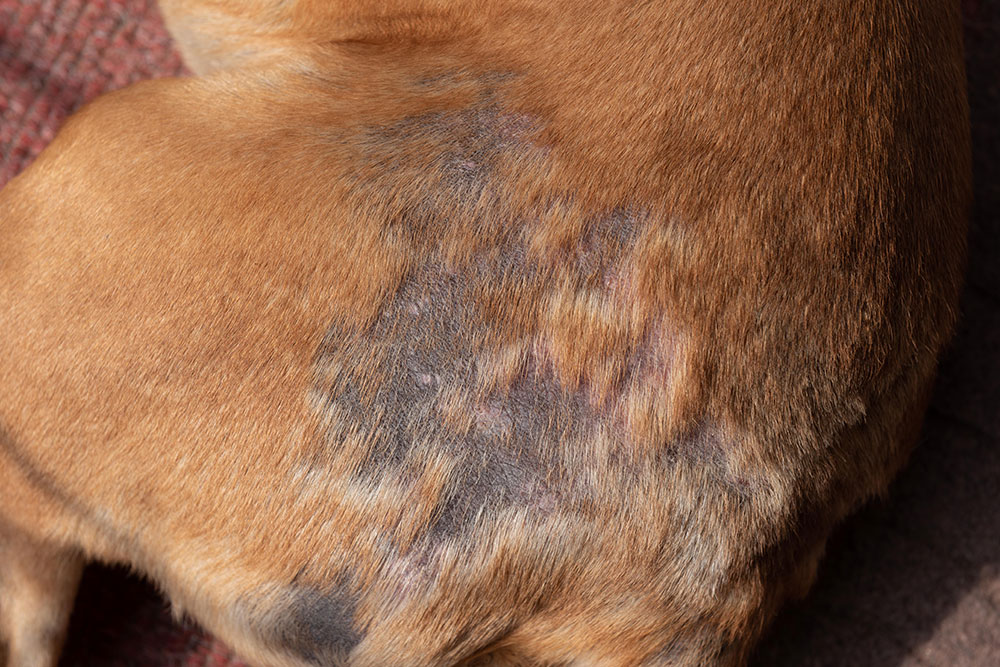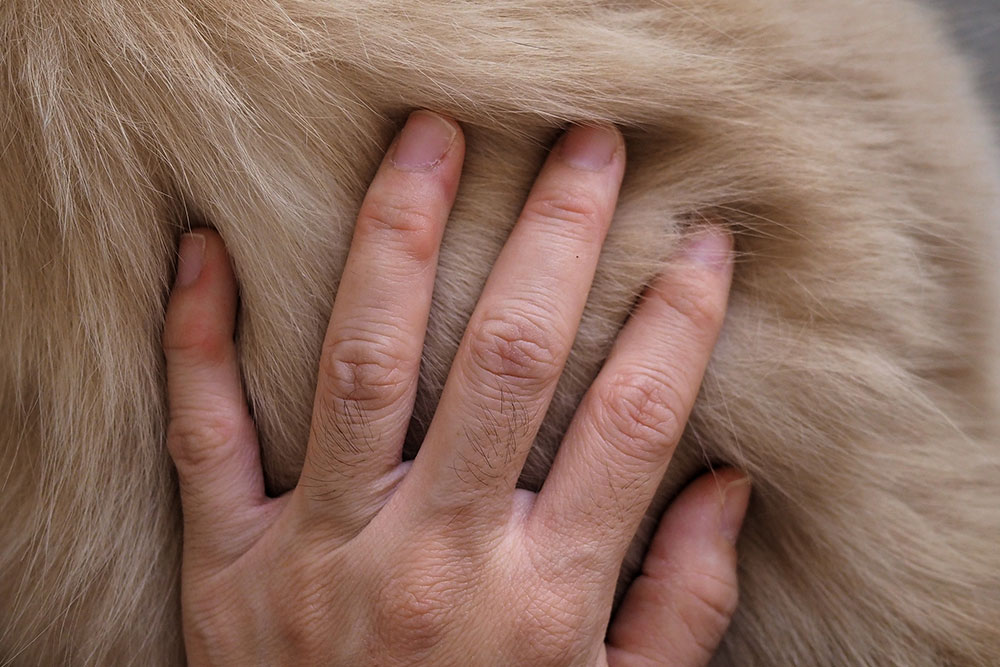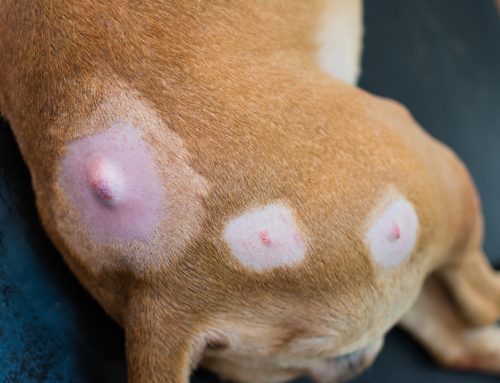At Guam Pet Hospital, we understand how concerning it is to notice bald spots, thinning fur, or irritated skin on your dog or cat. Hair loss—medically known as alopecia—is one of the most frequent issues pet owners bring to us, and it’s rarely just a cosmetic concern. It can be a visible sign of deeper problems, including allergies, stress, infections, parasites, or hormonal imbalances.
What Is Alopecia in Pets?
Alopecia is defined as abnormal hair loss—meaning hair falls out beyond the typical seasonal shedding cycle. It can occur in localized patches or affect larger portions of your pet’s body, sometimes symmetrically, sometimes not. These patterns can help point to underlying causes, such as hormonal imbalances (symmetrical) or external triggers like parasites (random or localized).
Understanding alopecia starts with understanding that it’s not a diagnosis in itself, but a symptom of a deeper issue.
The Normal Hair Growth Cycle—and What Can Disrupt It
Pets have a natural cycle of hair growth:
- Anagen (growth phase)
- Catagen (transitional phase)
- Telogen (resting/shedding phase)
When something disrupts this cycle—whether an allergy, hormone imbalance, or infection—the hair either stops growing, falls out prematurely, or doesn’t regrow properly. That’s when alopecia occurs.
Common Causes of Hair Loss in Dogs and Cats
There are many potential reasons behind hair loss in pets, which is why an accurate diagnosis is essential. Some of the most common causes include:
1. Parasites
Fleas, mites, lice, and mange can cause intense itching and skin irritation, which leads to hair loss. Some pets, especially cats, may develop flea allergy dermatitis, where a single bite can trigger an extreme skin reaction. Learn more from Cornell Feline Health Center.
2. Allergies
Pets can develop allergies to:
- Food ingredients
- Environmental factors like pollen or dust mites
- Insect bites, especially fleas
Allergies often present as itching, licking, skin inflammation, and eventually hair loss. For a helpful overview, read Dog Allergies: Symptoms & Treatment.
3. Infections
- Ringworm, a highly contagious fungal infection that can spread to people
- Bacterial skin infections, often secondary to scratching or trauma
Both types can cause bald patches, crusty skin, or inflammation.
4. Endocrine Disorders
Hormonal imbalances interfere with the normal hair growth cycle. Common examples include:
- Hypothyroidism in dogs
- Cushing’s disease (hyperadrenocorticism)
- Exposure to human hormone creams and medications
These often lead to symmetrical hair loss, thinning skin, and other systemic symptoms.
5. Genetic and Autoimmune Conditions
Some breeds are predisposed to genetic conditions such as color dilution alopecia, which affects the hair follicles. Learn more about Color Dilution Alopecia in Dogs.
6. Behavioral and Stress-Related Causes
Excessive grooming or licking due to anxiety, boredom, or stress—known as psychogenic alopecia—is particularly common in cats.
Why Hair Loss Matters
Hair loss is often the body’s way of signaling that something is wrong. Even if your pet doesn’t seem bothered, ignoring alopecia can lead to:
- Secondary skin infections
- Chronic inflammation
- Pain or discomfort
- Zoonotic risks (some infections like ringworm can affect humans)
Early diagnosis and treatment help prevent more serious health problems—and can greatly improve your pet’s daily comfort and emotional well-being.
Symptoms of Alopecia: What to Watch For

Hair loss can appear differently depending on the cause. Common signs include:
- Bald spots or thinning patches
- Persistent scratching or licking
- Red, inflamed, or scaly skin
- Sores, crusts, or discharge
- Unusual coat texture or dullness
- Behavior changes like irritability or overgrooming
If you’re noticing one or more of these signs, it’s time for a professional evaluation.
How Hair Loss Progresses Over Time
If left untreated, mild alopecia can escalate into more serious issues. These may include:
- Thickened, scarred skin
- Permanent hair loss in affected areas
- Chronic infections
- Increased stress and behavior changes
Prompt diagnosis can prevent long-term complications and help your pet feel better faster.
Diagnosing Alopecia at Guam Pet Hospital
At Guam Pet Hospital, we use a step-by-step diagnostic approach to identify the root cause of your pet’s hair loss. This may include:
- Physical exam – To evaluate the pattern and texture of hair loss
- Skin scrapings – To check for mites and mange
- Fungal cultures – For ringworm and other fungal infections
- Bloodwork – To assess for hormonal imbalances or systemic illness – Learn why bloodwork matter
- Allergy testing – For food or environmental sensitivities
Treatment Options: Personalized for Your Pet
The treatment depends entirely on what’s causing the alopecia. We may recommend:
- Parasite prevention and control – Flea, tick, and mite treatments. See the importance of year-round protection.
- Allergy management – Including dietary trials, antihistamines, corticosteroids, or prescription allergy medications.
- Infection treatment – Antifungal or antibiotic medication for bacterial or fungal skin issues.
- Hormonal therapy – For endocrine conditions like hypothyroidism or Cushing’s.
- Stress reduction strategies – Behavioral modification, enrichment, and, in some cases, anxiety medications.
- Nutritional support – A balanced, high-quality diet supports healthy skin and coat.
What Happens If It’s Left Untreated?
Neglecting alopecia can lead to:
- Persistent itching and skin trauma
- Secondary infections that require long-term treatment
- Worsening of underlying systemic illness
- Diminished quality of life for your pet
Even if hair loss seems minor, a timely veterinary visit can make a significant difference.
At-Home Care and Prevention Tips
You can support your pet at home by:
- Maintaining a consistent grooming routine – Here’s why it matters
- Monitoring coat and skin regularly – Note any changes and track symptoms over time.
- Providing a low-stress environment – Use calming tools and enrichment for mental health.
- Preventing self-trauma – Use E-collars or soft recovery cones to avoid licking or scratching.
FAQs About Pet Hair Loss
Is all hair loss a sign of illness?
Not always. Some shedding or mild thinning can be normal. But persistent or patchy hair loss often indicates an underlying issue.
How long does it take for my pet’s hair to grow back?
It depends on the cause. Mild cases may resolve in a few weeks. More complex conditions could take months, and some forms of hair loss may be permanent.
We’re Here to Help—Every Step of the Way
At Guam Pet Hospital, we understand that hair loss in your pet can be more than a surface concern. It’s about their comfort, confidence, and quality of life. Whether you’re dealing with mild symptoms or a chronic condition, our team is here with expert diagnostics, effective treatment plans, and compassionate care.
If you’re concerned about hair loss in your dog or cat, contact us. Let’s work together to uncover the cause—and help your pet feel like themselves again.








Leave A Comment